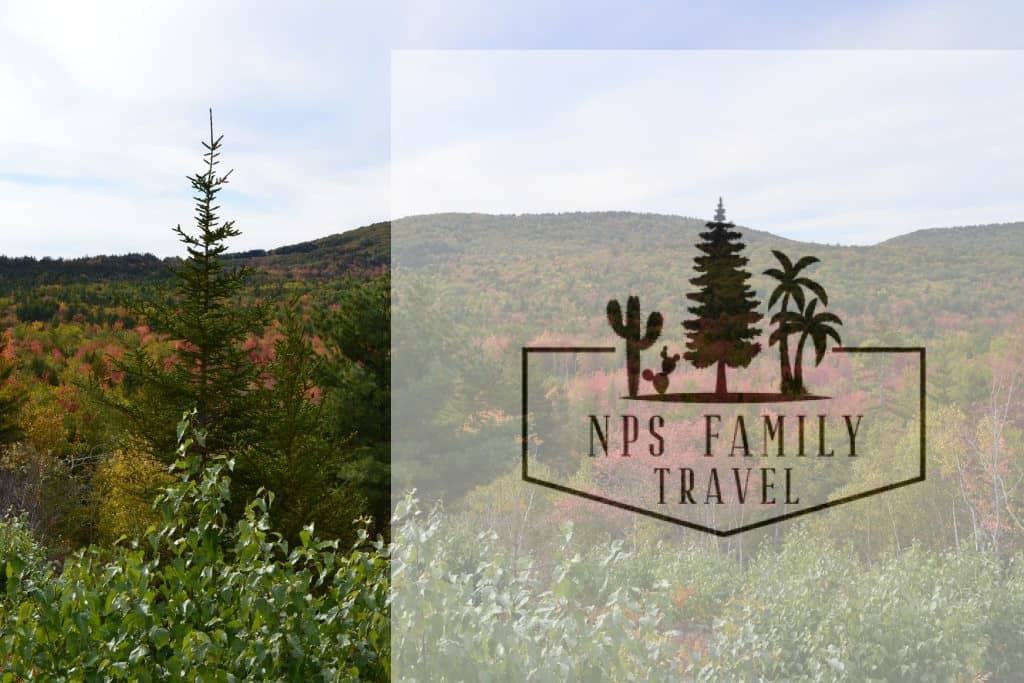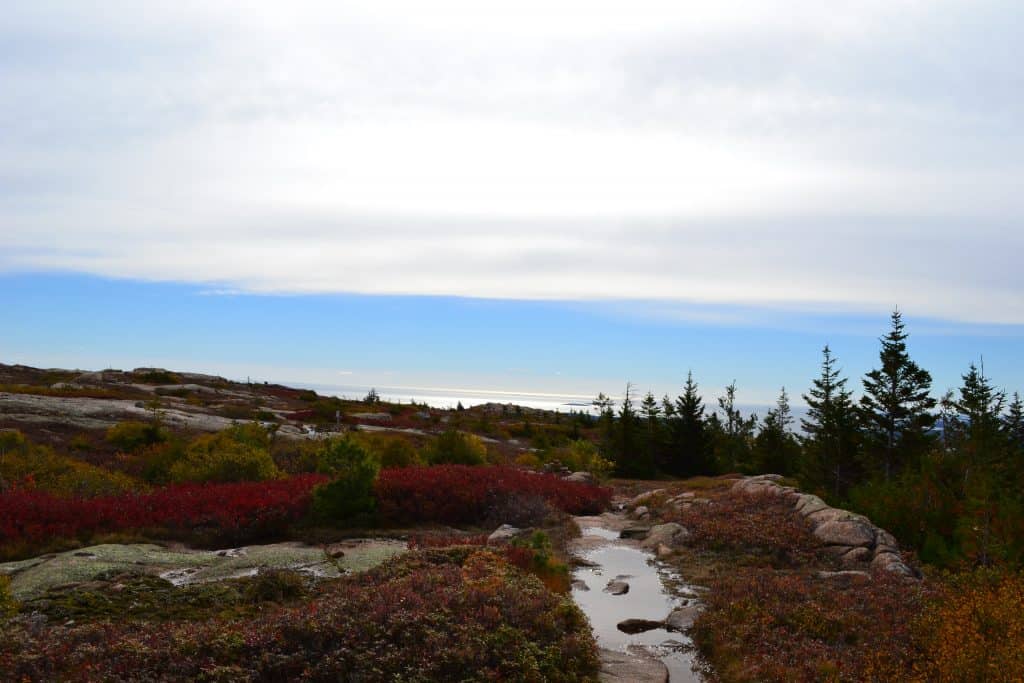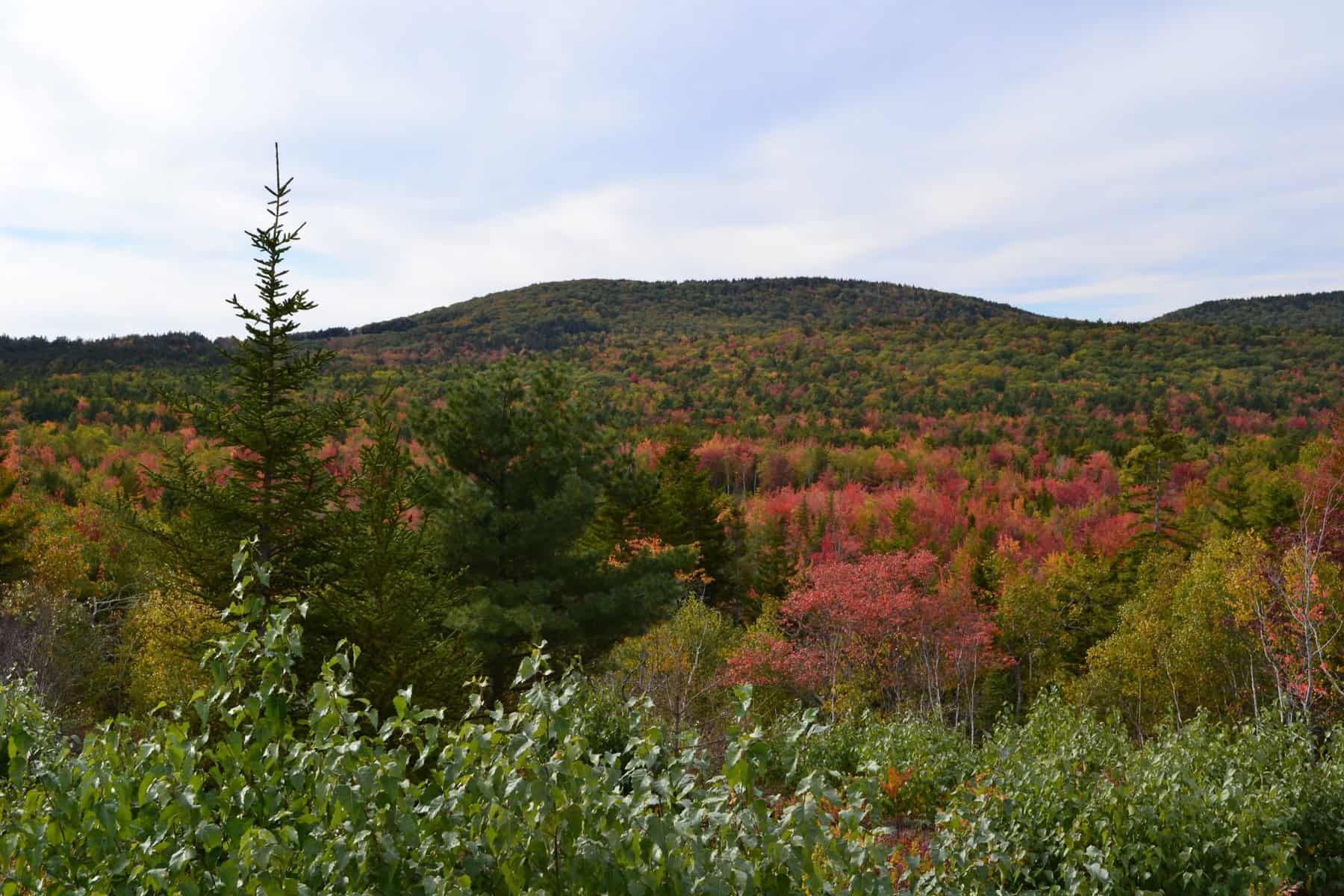Acadia National Park, located in the picturesque state of Maine, is renowned for its stunning landscapes and vibrant colors throughout the year. However, it is during the autumn season that the park truly comes alive with a breathtaking display of fall foliage.
If you’re planning a visit to Acadia National Park to witness the captivating beauty of fall colors, this article will guide you on the best time to experience nature’s vibrant transformation.

Best Time to See Fall Colors in Acadia National Park
When autumn arrives, Acadia National Park transforms into a captivating tapestry of colors. The lush green foliage that blankets the park’s forests gradually gives way to a vibrant palette of reds, oranges, yellows, and golds.
As the leaves change hue, the park’s landscapes are bathed in a warm and inviting ambiance, creating a truly magical experience for visitors. People from all over the world make the pilgrimage to enjoy New England’s breathtaking, fall landscape!
What are the fall colors in Acadia National Park?
Here are some common trees in Maine and the colors they typically turn:
- Sugar Maple: Sugar maple trees are renowned for their brilliant fall colors. Their leaves can transform into shades of vibrant red, orange, and yellow, creating a picturesque display across the landscape.
- Red Maple: Red maple trees exhibit a range of colors during fall, including vibrant reds, oranges, and yellows. Their foliage adds a striking contrast to the scenery, particularly in wetland areas.
- Yellow Birch: The leaves of the yellow birch tree turn bright yellow or golden hues in the fall. Their smooth, peeling bark adds an extra element of visual interest.
- Large/Big Toothed Aspen: Big-toothed aspen trees are known for their vibrant golden yellow foliage during autumn. They create a beautiful contrast against the evergreen conifers in Acadia’s forests.
- Paper Birch: Paper birch trees, with their white bark, add a distinctive touch to fall landscapes. Their leaves turn a bright yellow, illuminating the surroundings with their golden glow.
These are just a few examples of trees that showcase stunning fall colors in Maine. The exact timing and intensity of the foliage can vary each year, so it’s advisable to check local foliage reports for the most up-to-date information on peak fall colors.
If you want to know more about the trees native to Acadia National Park, consider reading this historical account.
Timing is Everything
The timing of the fall foliage peak in Acadia National Park can vary from year to year and is influenced by several factors, including temperature, daylight hours, and weather conditions. Factors include:
- Photoperiod: The length of daylight hours is a significant factor in triggering the changes in foliage. As the days grow shorter in the autumn season, the trees receive less sunlight, leading to a decrease in chlorophyll production and revealing the vibrant colors of pigments such as carotenoids and anthocyanins.
- Temperature: Cooler temperatures play a crucial role in fall foliage development. As temperatures gradually decrease, it signals the trees to start preparing for winter. However, an abrupt frost or freeze can impact the duration and intensity of fall colors, causing leaves to drop prematurely.
- Moisture and Rainfall: Adequate moisture throughout the year, including spring and summer, helps maintain healthy tree foliage. Sufficient rainfall during the growing season contributes to the overall health of the trees, promoting vibrant and prolonged fall colors.
- Tree Species: Different tree species have varying responses to changing seasons. Some species, like maples and birches, are known for their brilliant fall foliage, while others may exhibit more muted colors or drop their leaves early. The diversity of tree species in Maine contributes to the variety and depth of fall colors.
- Elevation and Geography: Higher elevations experience cooler temperatures, which can result in earlier and more pronounced fall foliage changes. Coastal areas may have a milder climate, leading to a delay in the timing of peak colors compared to inland regions.
It’s important to note that the exact timing and intensity of fall foliage can vary from year to year due to these factors. The fall foliage report offers historical and predictive calendars of when to see the fall colors in Maine. When viewing this report, Acadia National Park and Bar Harbor, Maine are in “zone 2.”
However, as a general rule, the best time to visit for fall colors is usually from mid-September to late October.
Is Mid-September a good time to see fall colors in Acadia National Park?
In mid-September, you can start to witness the initial hints of autumn as pockets of color begin to appear throughout the park.
While the foliage may not be at its peak during this time, the tranquil atmosphere and milder temperatures make it an ideal period to explore Acadia National Park before the peak tourist season.
Is late September to Early October a good time to see fall colors in Acadia National Park?
As September progresses into early October, the fall colors intensify, creating a vibrant display across the park. During this period, you can expect to see a mix of reds, yellows, and oranges adorning the trees, particularly in higher elevations and areas with deciduous forests.
The crisp air makes late September to early October a lovely time to immerse yourself in Acadia’s fall beauty.
Is mid-October to Late October a good time to see fall colors in Acadia National Park?
By mid-October, Acadia National Park reaches its peak foliage, presenting a spectacular visual feast for visitors. During this time, the landscapes are ablaze with brilliant shades of red, orange, and gold, providing picture-perfect opportunities for photographers and nature enthusiasts.
Be prepared for crowded conditions during this period, as the peak fall colors attract a significant influx of visitors.

Capturing the Beautiful Fall Colors in Acadia
To make the most of your fall foliage experience in Acadia National Park, consider the following tips:
- Scenic Drives: Take advantage of the park’s scenic drives, such as the Park Loop Road and the Jordan Pond Road, which offer breathtaking views of the fall colors from the comfort of your vehicle. Remember that if you plan to drive the road to Cadillac Mountain between May 24-October 22, you will need a vehicle reservation. View details HERE.
- Hiking Trails: Lace-up your hiking boots and explore the park’s numerous hiking trails, where you can immerse yourself in the heart of nature’s autumn masterpiece. Acadia is a perfect park for all skill levels and hiking preferences. Enjoy your close-up of the fall colors in Acadia!
- Photography: Bring your camera and capture the vibrant colors, contrasting landscapes, and reflections in the park’s lakes and ponds. Early morning and late afternoon light can enhance the beauty of the fall foliage. If you can, be sure to catch the sunrise at Cadillac Mountain. Read everything you need to know for a perfect, sunrise morning in Acadia!
- Plan Ahead: Given the popularity of Acadia National Park during the fall season, plan your visit in advance by booking accommodations and making any necessary reservations. Acadia and its surrounding towns are small. There are limited places to stay. Seeing the fall colors in Acadia is a treat worth booking as far in advance as possible. If you’re a family on a budget, one of our favorite places to stay is a camper cabin or a tent site at KOA Bar Harbor.
Experience the Magic of Acadia’s Fall Colors
Visiting Acadia National Park during the fall season is an unforgettable experience. The vibrant hues, crisp air, and the serenity of nature combine to create a truly magical ambiance.
Whether you choose to hike the park’s trails, drive along scenic routes, or simply sit by a tranquil lake, the fall colors of Acadia will leave an impression on your heart!

